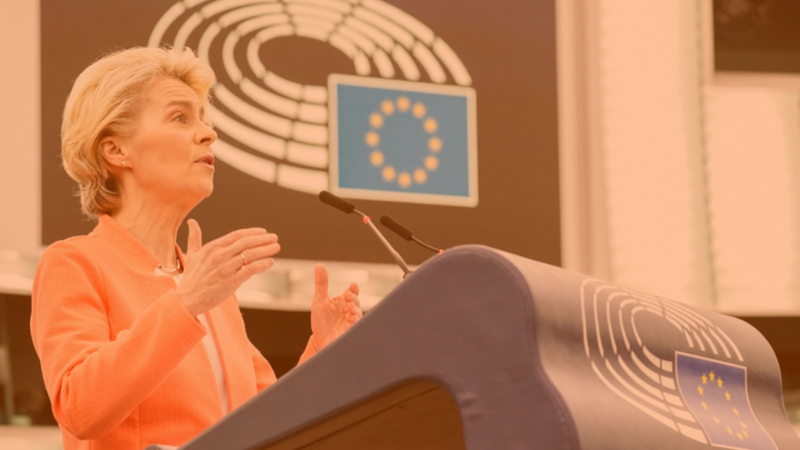Europe is languishing in a long-term economic slump whose origins lay in Wall Street’s near-death experience in 2008. There have, of course, been subsequent spurts of growth (and hope), but these tend to fizzle out soon after they appear.
Given the European Union’s policy choices, it could not have been otherwise. These policies reflected the eurozone’s faulty design and guaranteed chronically low investment at precisely the time massive investments were necessary to shift Europe’s aging industrial base from dirty energy, chemicals, and the internal combustion engine to cloud capital and green technologies.
On both sides of the Atlantic, the policy response to the chain reaction triggered by the collapse of Lehman Brothers in 2008 was similar. The United States and the EU carried out history’s grandest and most cynical transfer of private losses from the books of quasi-criminal financiers onto public debt ledgers, combined with fiscal austerity to rein in burgeoning public debt. The result? A massive liquidity trap that increased public debt and led to the greatest disconnect ever between available liquidity and real capital investment.
The predictable long-term outcome was economic stagnation. In the event, the malaise was so deep and lasted so long that it poisoned politics in Europe and the US. But that’s where the similarities end and Europe’s growing disadvantage relative to the US begins, because, unlike the US, the eurozone lacked the federal institutions which, in times of crisis (like that of 1929 or 2008), can stabilize a monetary union and prevent it from falling into a lasting slump.
After 2008, the EU had two options for keeping its monetary union intact, only the first of which could avert the permanent slump. The first option was to federate de facto, even if not de jure, a strategy that would entail common debt, substantial federal-like taxes, and a five-year aggregate pan-European green investment plan.
To choose this option, however, Europe would have to ditch the neo-mercantilism central to the German and Dutch business models, which lay at the heart of the eurozone. One might have thought (as, admittedly, I did) that Europe’s elites would have considered the abandonment of neo-mercantilism a relatively small price to pay for avoiding a perma-slump.
But one would have been wrong. Europe’s most successful net exporters and their political agents cared far less for Europe’s dynamism than for maintaining their reliance on net exports sustained by the US trade deficit (a constant source of aggregate demand for their wares). They also ranked the importance of their net exports to China and the suppression of German wages well above the importance of giving Europe a chance to recover its elan.
The second option was to avoid the quasi-federal option by relying on massive austerity for the eurozone’s most depressed member states, accompanied by equally massive quantitative easing favouring the least depressed parts of the monetary union. This was the option that was adopted, with the cruel treatment of the eurozone’s most bankrupt member, Greece, intended to signal this choice to the other member states.
The result was that the euro was saved at the expense of a permanent stagnation in aggregate investment across Europe, along with deepening rifts between the EU’s north and south (with new east and west rifts developing, too). Meanwhile, the US is on a public investment spree that lures Europe’s industrial conglomerates stateside, thus deepening the EU’s investment gap. Unsurprisingly, the EU, despite its Green Deal pronouncements, cannot fund its own green transition, let alone Ukraine’s post-war recovery.
Today, the danger is not that Europe’s policymakers will double down with more fiscal austerity. Their preferred weapon of contraction nowadays is monetary policy. Having erred once in shunning a bold progressive monetary policy that would have averted the recent bout of inflation, they are now tightening too much and for too long. The result is that an already disjointed monetary union, on the verge of recession in the midst of stubborn inflation (despite the rapidly shrinking money supply), is falling behind China and the US.
The cause of all this is structural. Contractionary, and thus debilitating, austerity remains hard-wired into Europe’s current institutional framework – a fact that stops governments of all political shades from trying out different policy agendas. Europe’s unfinished architecture of integration prohibits experimentation with the kind of industrial policy the US is now pursuing (under the Inflation Reduction Act and the CHIPS and Science Act) or with other agendas.
Sure enough, the German government is departing from EU orthodoxy, by channelling vast public funds into aiding its floundering industrial model. But it does so at the cost of wrecking the single market and the commitment (more theoretical than actual) to a pan-European level playing field. Expect a backlash soon from EU member states that cannot match German subsidies, especially those that cannot protect their industries by devaluation.
EU cheerleaders celebrate the survival of the euro, the fact that public debt is no longer the threat it was, and, crucially, that their mercantilist business model remains intact. Deep down, they understand that they owe this small miracle to those who worked hard at the European Central Bank (despite the Bundesbank’s fierce opposition) to crank up the ECB’s printing presses and unleash torrents of euros to prevent a Greece-style outcome in Italy.
But it has come at a steep price: Europe’s permanent stagnation and continuing fragmentation. Europe’s monetary union remains disastrously incomplete, lacking the political and fiscal union necessary to make it work; worse, 15 years of malaise have deepened the impasse. We Europeans must either brace ourselves for secular decline, forced upon us by our problematic currency, or do something about it. A structural problem demands a political solution.
Do you want to be informed of DiEM25's actions? Sign up here















